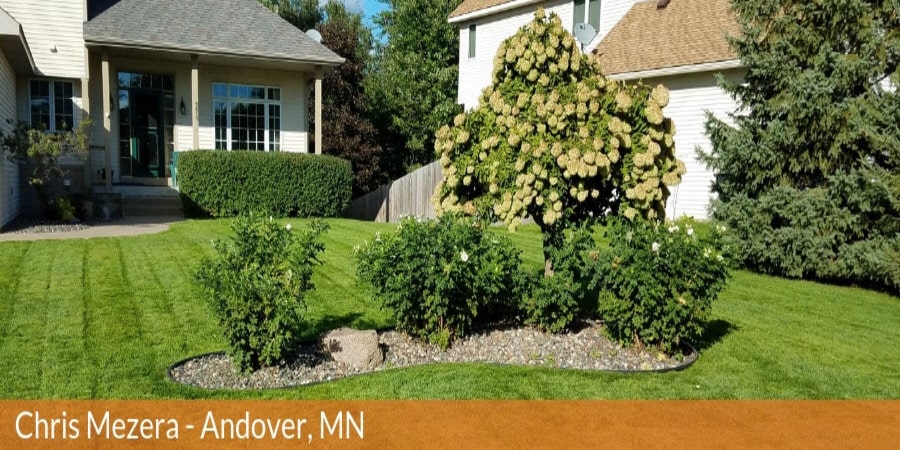How to Kill Dandelions in Your Lawn
- Milorganite AgronomistMarch 30, 2019
How many dandelions does it take to invade your lawn? One. Just give it time.
The common dandelion (Taraxacum officinale) is a prolific intruder of lawns, primarily blooming in spring with an encore appearance in fall. The name dandelion originated from the French “dent de lion,” meaning “lion’s tooth,” referring to the serrated leaves, not the bright-yellow bloom.
These perennial survivors are hardy and can be found in all 50 states and most Canadian provinces—from frozen tundra to subtropics. They’re aggressively invasive. (Like I needed to tell you that.)
You’ll see dandelions sprout when the soil temperature reaches 50 F and germinate more quickly when soil temperatures are closer to 77 F. They’re hardy, resistant to most diseases and pests, tolerate poor soil nutrients and periods of drought. (My lawn and garden plants should be so hardy!)
Dandelions don’t really hurt anything, they’re just annoying, unwanted bright-yellow dots throughout your lawn.
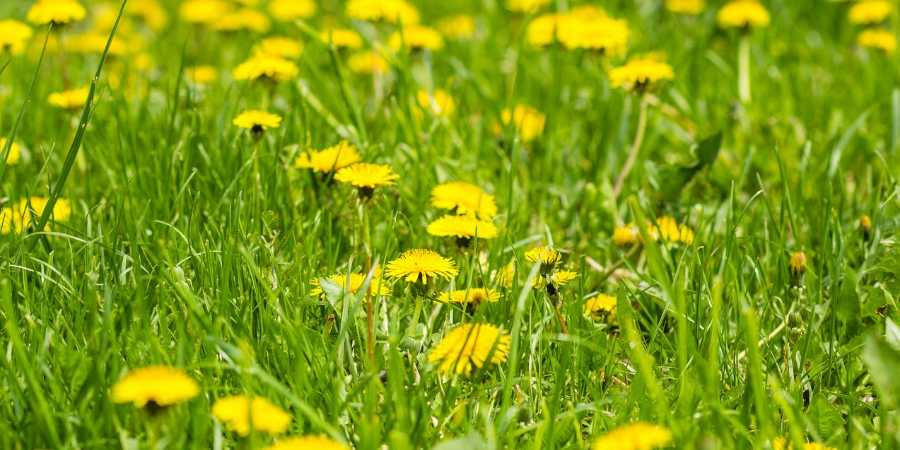
Where do dandelions come from?
Dandelions are native to Europe and Asia and have been used as an herb and for medicinal purposes since the Roman Empire. It’s rumored that European settlers intentionally introduced them to the new world for medicinal purposes and to remind them of home. Once introduced to foreign lands, there weren’t the pests and diseases that would normally keep them in check, giving them an unfair advantage over native species.
Eat Your Weeds
Dandelions are edible, from flower to root, and have a delicate, slightly bitter flavor. If your culinary curiosity kicks in, you might want to try some dandelion greens in your next salad. Likely to the amazement of lawn-lovers, some people actually cultivate dandelions for harvest. If you’re going to nibble on a dandelion, make sure it hasn’t been treated with a synthetic fertilizer, herbicide, insecticide or anything else you may use to treat your lawn.
Why are dandelions so hard to get rid of? They’re built to survive.
It’s not your imagination, dandelions are one of the most difficult weeds to control. The anatomy of a dandelion makes them a formidable foe and difficult to eradicate. They easily evade your mower blades by hugging the ground as they grow.
Dandelions produce an abundance of seeds, with or without cross-fertilization from another flower. The parachute-like seed structure makes them ideal for traveling freely on even the slightest breeze, expanding the weed’s territory far and wide. There can be anywhere from 50 to 170 seeds on a single flower head and a single plant can produce—wait for it—more than 5,000 seeds annually! A prolific nuisance.
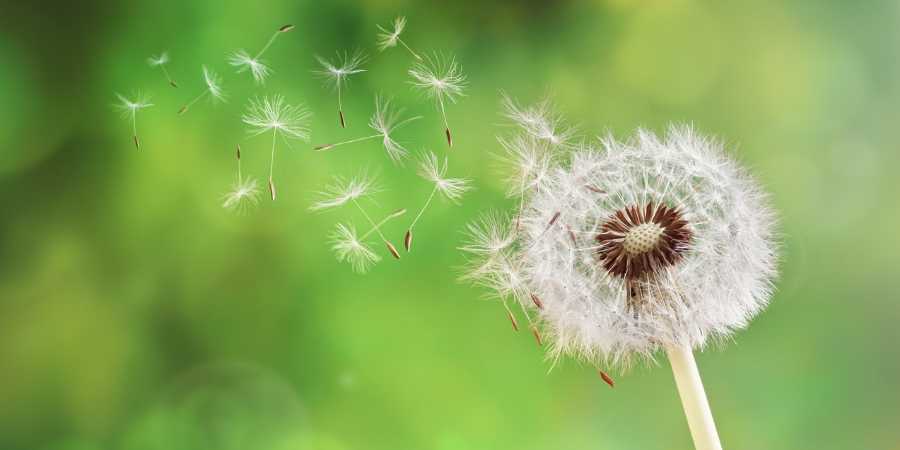
Dandelions grow deep, sturdy taproots, generally 6–18” in length and in ideal conditions they can grow to feet in length! By the time you see the dandelion’s bright golden flowers, it’s already well established. Undisturbed, dandelions can live for 10 to 13 years.
Although they grow best in moist soil and full sun, once established, they’ll survive in dry and shady conditions. You’ll find them growing in your lawn where grass cover is thin, in bare patches and compacted soil—weeds often prefer places where grass would struggle.
How to Prevent Dandelions from Growing
Maintaining a lush, healthy lawn is your best defense against weeds, including dandelions.
Tips for Preventing Dandelions from Sprouting
- Cut your lawn at the optimal height for your grass variety/ies. A thick lawn shades the soil, helping to prevent dandelion and other weed seeds from germinating. Never remove more than one-third of the grass blade in a single cutting.
- You can help prevent dandelions from spreading by mowing down them down when they’re blooming—before they go to seed. Although it’s not a method for getting rid of dandelions, it’s very effective in helping to prevent thousands more dandelion seeds from blowing throughout your yard—and your neighbor’s.
- If dandelions are showing up in your landscape and garden, mulch to a minimum depth of 2–3” to keep them from growing. If you see dandelions growing on the mulch, it’s easy to pick the entire plant.
- Once you gain some control over the dandelions, you might consider a pre-emergent herbicide applied four to six weeks before dandelions generally sprout. It won’t kill existing weeds, but it will help prevent seeds from germinating.
- Fertilize regularly with Milorganite to help maintain a healthy, lush lawn, which is your best defense against dandelions and other weeds.
How to Get Rid of Dandelions in Lawns
Ridding your lawn of dandelions depends on how many have invaded your lawn and your tolerance level for them. If there are only a few and you’re able to live with them in harmony, leave them alone.
Dig ‘em Out
If there are only a handful of dandelions in your lawn, and you have a low tolerance level for these freeloaders, your first line of defense is to remove them by hand. At this point, it’s easy enough to remove dandelions without chemicals. Please don’t bother with the time and expanse of using an herbicide on your entire lawn.
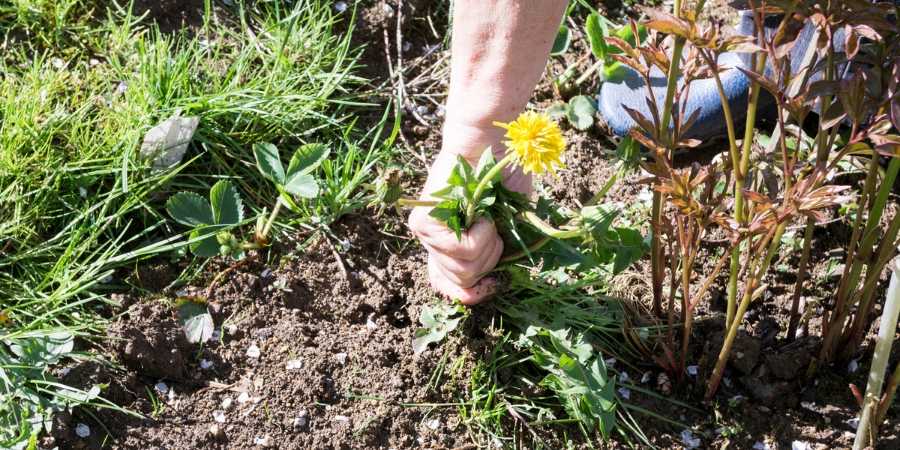
Removing the dandelion’s entire tap root is essential! If you remove just the dandelion flower and plant from the surface of the soil a new plant will grow. Even removing a couple inches of root won’t kill it. Dandelions can easily reproduce from the remaining root. Dandelion taproots are brittle. Fragments of root as little as 1” left in the ground can generate new plants.
Removing dandelions by hand will be significantly easier using a specialized tool designed to remove the entire taproot. Personally, I find it extremely satisfying doing this! Maybe it’s the immediate gratification.
There are plenty of dandelion digger models in any number of sizes and shapes that use different removal methods. They range from hand-held to ones on poles so you don’t have to bend down. Pick one that’s comfortable for you to use. If it’s not, you’re not going to want to use it. Personally, I use a pole-type digger that allows you to pop out the dandelion after it’s been removed.
Make sure to address any bare spots that may result from removing the dandelions. If there’s a hole, it’s a good idea to patch it with a little topsoil. If it’s a larger hole, you can also add grass seed and Milorganite. Patching the area will help prevent weeds from taking advantage of the grass-free area.
Tips for Getting Rid of Dandelions by Hand
- Don’t let them get any more out of control than they already are. Remove the dandelions as you see them.
- Remove dandelions when the soil is moist. Weeds, in general, are difficult if not impossible to remove in hard, dry soil.
Spot Treat
If your lawn has a moderate number of dandelions—and what you consider moderate depends on your tolerance level—I recommend spot treating with a post-emergence herbicide. One way of deciding whether you have a “moderate number of dandelions” is to consider how long it would take to remove all of the dandelions by hand. If it would take a couple of days to remove them all, it’s probably time for spot treatment.
There are many natural products for dandelion removal on the market you might try for spot treatment, including botanically based oils, fatty-acid soaps or acetic vinegar. These products work to varying degrees by making contact with and destroying the leaves, which kills the plant. More natural products will work better on newly established dandelions. Talk to someone knowledgeable on these types of products at your local garden center to help you decide which is best for you. Dousing the plant with boiling water is another method you might consider.
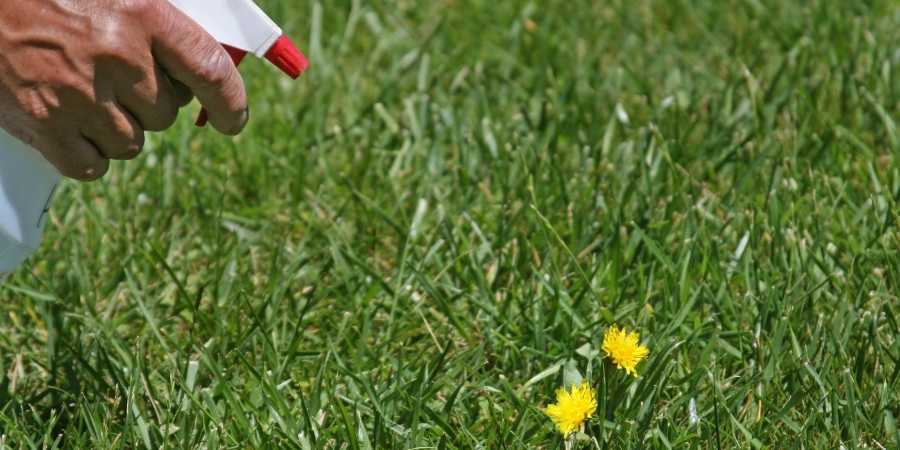
The vinegar mentioned isn’t the kind you use in the kitchen, which is 5% acetic acid. Herbicidal vinegar products are 20% acetic acid. Carefully follow manufacturer instructions for use and be very cautious, as vinegar at this concentration has the potential for being toxic. Handle with extreme care.
You may want to consider a more environmentally friendly broadleaf weed killer with the active ingredients HEDTA and FeHEDTA, which are iron-based.
Herbicides will kill the entire dandelion and spot treating is the most judicious use of chemicals. There are many herbicides on the market. Read the label. Some herbicides will also kill a number of grass varieties. Always follow manufacturer recommendations and municipality guidelines when treating your lawn.
Tips for Spot Treating Dandelions
- Read the label to ensure the herbicide you use won’t also kill your grass variety/ies.
- Follow manufacturer instructions and municipality guidelines regarding the use of herbicides.
Treat the Entire Lawn with an Herbicide
You know I prefer more natural methods of maintaining lawns, but there are times when it makes sense to use an herbicide on the entire lawn. I decided to use an herbicide when my new lawn was overrun by weeds, which, much to my surprise, weren’t dandelions! Use synthetic products judiciously and only when appropriate. Excess use of any product may cause runoff and can impact area waterways and drinking water. To keep your lawn healthy and more resistant to weeds, fertilize with Milorganite, a slow-release fertilizer, which reduces the risk of nutrient runoff.
Tips for Using Herbicides to Kill Dandelions
- The best time to apply an herbicide is in fall when dandelions are actively storing food for winter. You may not see an immediate difference, but you will in spring.
- Read the label! Some herbicides will also kill certain grass varieties. It would be a shame to kill your entire lawn when you were only targeting the weeds. Kill dandelions, not grass!
- Follow manufacturer instructions and municipality guidelines regarding the use of herbicides.
Summary
Dandelions. They’re a perennial annoyance. Try as we might, we’ll never be able to completely rid our lawns of them. You may not win the battle, but you can keep the dandelions at bay—until your neighbor’s gold-speckled lawn goes to seed.
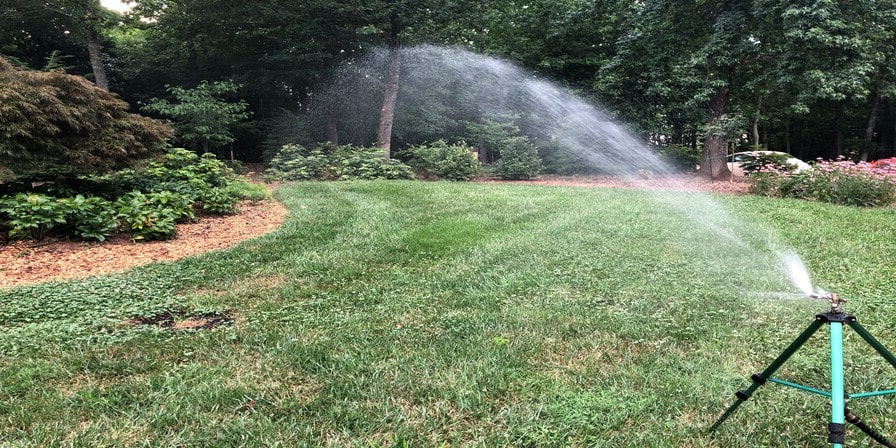
Five Steps to Spring Lawn Renovation
by Joe Lamp'l
Gardening Expert and Host of Growing a Greener World®

